orange
11 Products
Active Filters
Filter by Category
Filter by Color
Filter by Size
Filter by Price
Min Price:
Max Price:
-
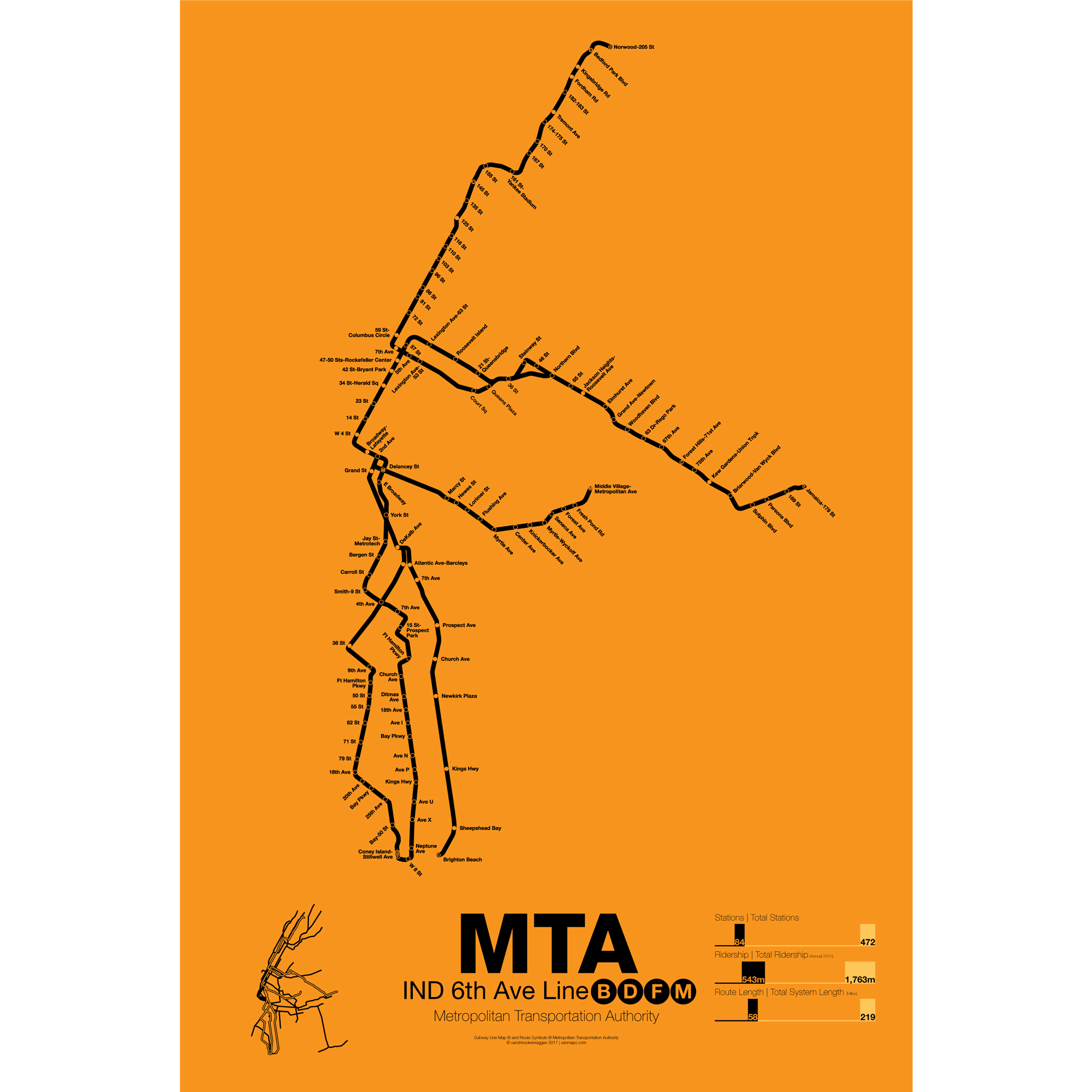
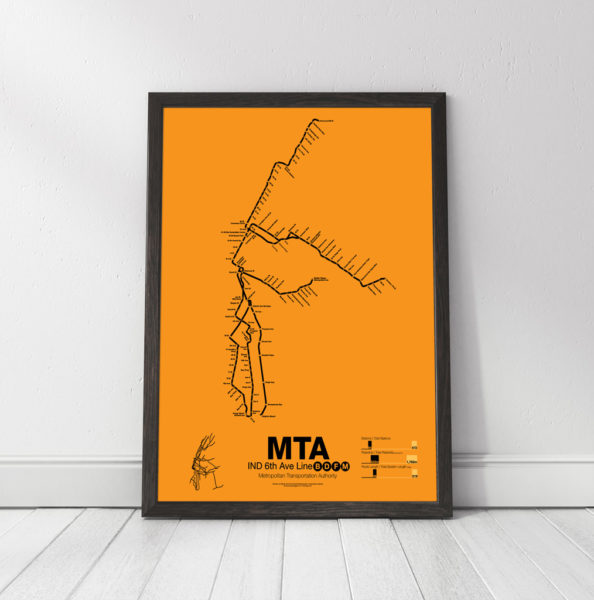 $30.00 – $80.00
$30.00 – $80.00The 6th Ave Line was the second half of the original IND system in Manhattan. The subway was built to replace the old 6th Ave elevated trains and, unlike the 8th Ave Line, was opened in sections between 1936 and 1968. The original sections expanded on the recently opened 8th Ave Line along Houston St to East Broadway, then under 6th Ave from West 4th St to 53rd St. The main trunk subway along 6th Ave was originally built with only two local tracks because of the existing PATH running under 6th Ave. Express tracks were not built until 1967.
B trains run only weekdays from 145th St in Manhattan to Brighton Beach via the Manhattan Bridge and the Brighton Line. At peak times B trains are extended into the Bronx to Bedford Park Blvd. D trains run all times from Norwood-205th St in the Bronx to Coney Island via the Manhattan Bridge, 4th Ave subway, and West End line (elevated). At peak times D trains run express along the Concourse subway. Both B and D trains run express in Manhattan, though B trains make all local stops from 59th St-Columbus Circle to 145th St.
F trains run express along the Queens Blvd subway and enter Manhattan via the 63rd St subway built in the 1960s as a part of the 2nd Ave subway. In Manhattan and Brooklyn F trains run local at all times. In Brooklyn the F shares part of its route with the IND G Crosstown line to Church Ave. After Church Ave the subway becomes elevated to Coney Island.
M trains once ran along the BMT Jamaica line to downtown Manhattan but in 2010 were rerouted along 6th Ave to Forest Hills replacing the short lived V train (which ran from Forest Hills to 2nd Ave). Elevated in Brooklyn, the M train runs through a section of tunnel, built in the 1960s but rarely used, to connect the 6th Ave line to the Williamsburg Bridge. M trains run all local weekdays and as a shuttle from Myrtle Ave to Middle Village nights and weekends.
Printed on Satin finish 80# cover stock – 220 GSM. Made in the USA! Standard production time is 5 days. Allow more time for shipping.
Select options This product has multiple variants. The options may be chosen on the product page -
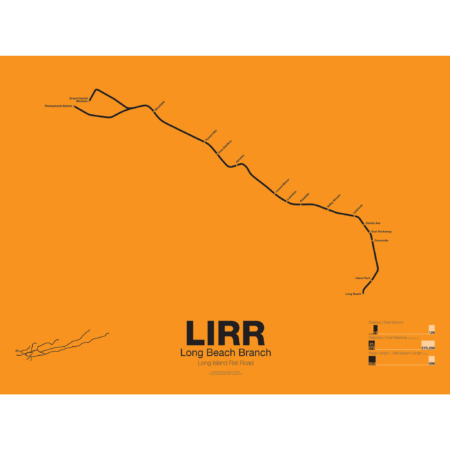
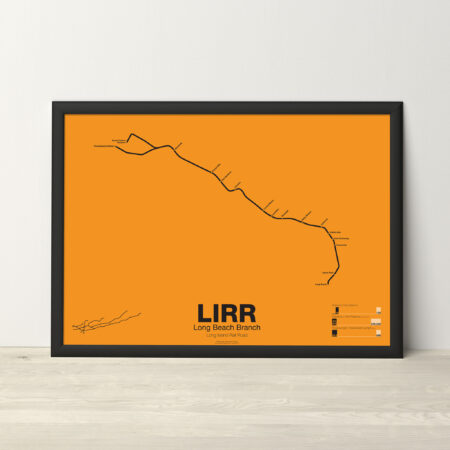 $30.00 – $80.00
$30.00 – $80.00The LIRR Long Beach Branch runs from Penn Station and Atlantic Terminal To Valley Stream and down to Long Beach. It was opened by the New York and Long Beach RR Company in 1880 and the original terminal was closer to the ocean as at the time Long Beach Island had not been developed. A short extension was built to Point Lookout but service ended in 1895. Originally the line was built only to Lynbrook but was connected to the LIRR at Valley Stream in 1910.
Printed on Satin finish 80# cover stock – 220 GSM. Made in the USA! Standard production time is 5 days. Allow more time for shipping.
Select options This product has multiple variants. The options may be chosen on the product page -
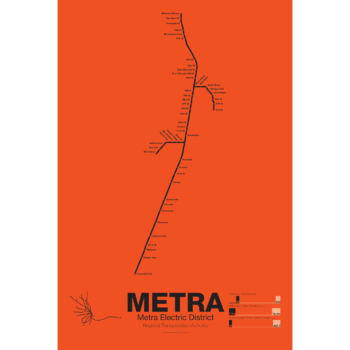
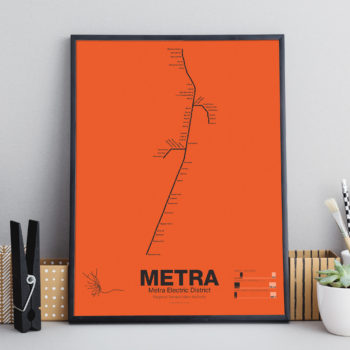 $30.00 – $80.00
$30.00 – $80.00
Printed on Satin finish 80# cover stock – 220 GSM. Made in the USA! Standard production time is 5 days. Allow more time for shipping.
Select options This product has multiple variants. The options may be chosen on the product page -
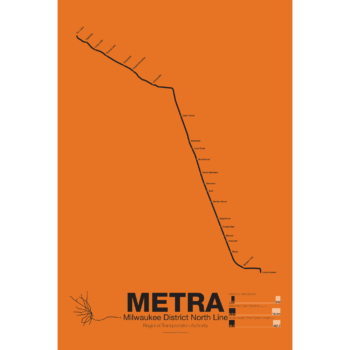
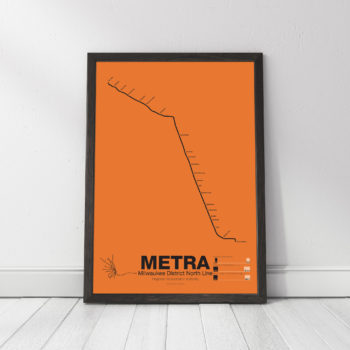 $30.00 – $80.00
$30.00 – $80.00
Printed on Satin finish 80# cover stock – 220 GSM. Made in the USA! Standard production time is 5 days. Allow more time for shipping.
Select options This product has multiple variants. The options may be chosen on the product page -
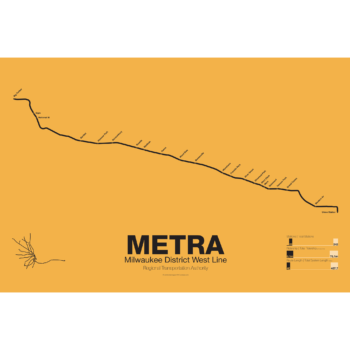
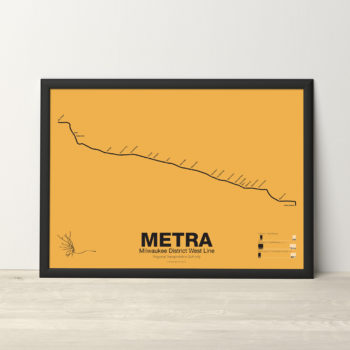 $30.00 – $80.00
$30.00 – $80.00
Printed on Satin finish 80# cover stock – 220 GSM. Made in the USA! Standard production time is 5 days. Allow more time for shipping.
Select options This product has multiple variants. The options may be chosen on the product page -

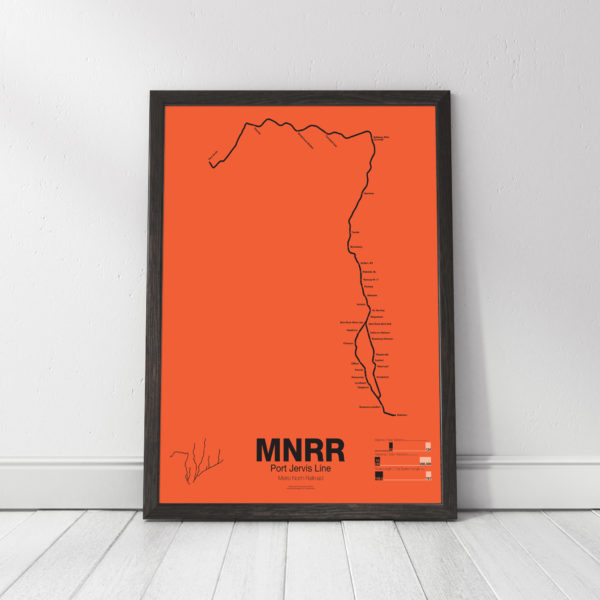 $30.00 – $80.00
$30.00 – $80.00The Metro North Port Jervis Line runs from Port Jervis where Pennsylvania, New Jersey and New York meet, through Sullivan and Rockland Counties, NY, and then through northern New Jersey to the Hoboken Terminal in Hoboken, NJ. Much of the Port Jervis Line started as the New York and Erie Railroad Main Line, opening to Port Jervis in 1848. The original line ran through the towns of Monroe, Chester, Goshen, and Middletown but this stretch was abandoned in 1984 when Metro North chose to move service to a longer, but faster and straighter, route.
The Erie Main Line once reached Buffalo and Chicago via the Southern Tier of New York State but lost money and ridership after World War II. The Port Jervis Line is one of two Metro North lines which run through New Jersey. The tracks in New York are owned and operated by Metro North but the tracks in New Jersey are owned and operated by New Jersey Transit. Port Jervis trains run to Hoboken Terminal but transfers are available at Secaucus Junction for service to Penn Station.
Printed on Satin finish 80# cover stock – 220 GSM. Made in the USA! Standard production time is 5 days. Allow more time for shipping.
Select options This product has multiple variants. The options may be chosen on the product page -
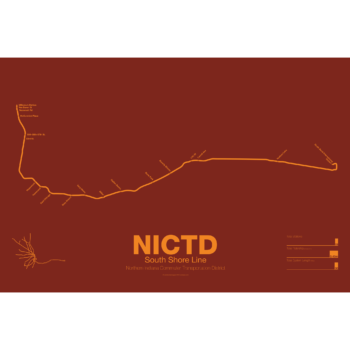
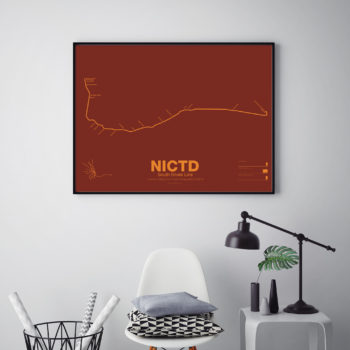 $30.00 – $80.00
$30.00 – $80.00
Printed on Satin finish 80# cover stock – 220 GSM. Made in the USA! Standard production time is 5 days. Allow more time for shipping.
Select options This product has multiple variants. The options may be chosen on the product page -
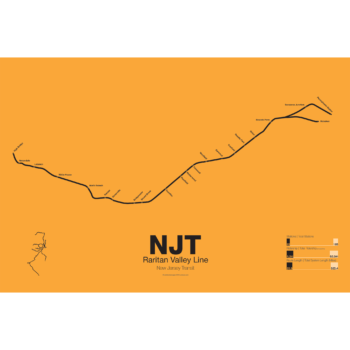
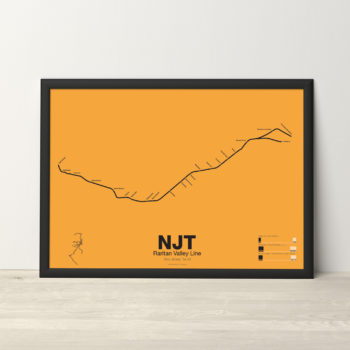 $30.00 – $80.00
$30.00 – $80.00
Printed on Satin finish 80# cover stock – 220 GSM. Made in the USA! Standard production time is 5 days. Allow more time for shipping.
Select options This product has multiple variants. The options may be chosen on the product page -
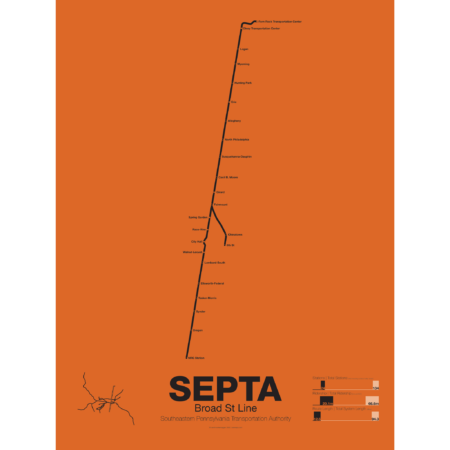
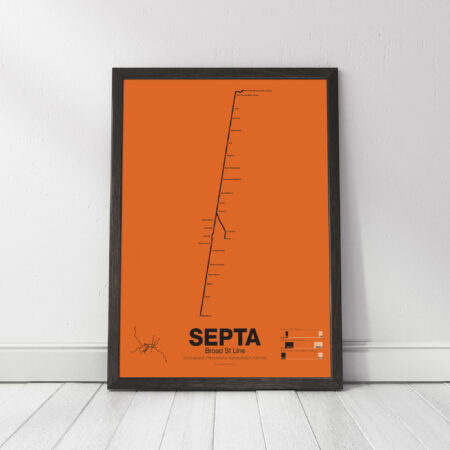 $30.00 – $80.00
$30.00 – $80.00The Broad Street subway line was opened in 1928 from Olney Ave to City Hall with subsequent extensions south to Walnut-Locust, Lombard-South, Sunder Ave, Pattison Ave (now AT&T) and finally Fern Rock over the next years and decades. Broad St was envisioned as part of a larger subway network and was to be a trunk line for multiple suburban branches, none of which have been built (the most famous is the still proposed Roosevelt Boulevard Subway). The line was built with 4 tracks, two local and two express, and junctions were built for the future branches, the only one built being the Ridge Ave Spur which has been converted for use by PATCO trains. Broad St runs four different services: B1 local, B2 express, B3 Ridge Ave Spur, and special event trains for games at the NRG sports complex.
The SEPTA Broad St Line poster shows the line with local and express stations, along with statistics and a mini map showing the line as part of the overall SEPTA network.
Printed on Satin finish 80# cover stock – 220 GSM. Made in the USA! Standard production time is 5 days. Allow more time for shipping.
Select options This product has multiple variants. The options may be chosen on the product page -
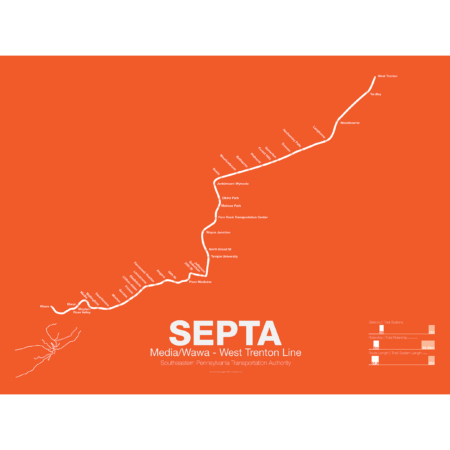 $30.00 – $80.00
$30.00 – $80.00
Printed on Satin finish 80# cover stock – 220 GSM. Made in the USA! Standard production time is 5 days. Allow more time for shipping.
Select options This product has multiple variants. The options may be chosen on the product page -
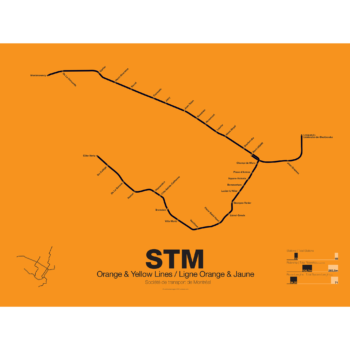
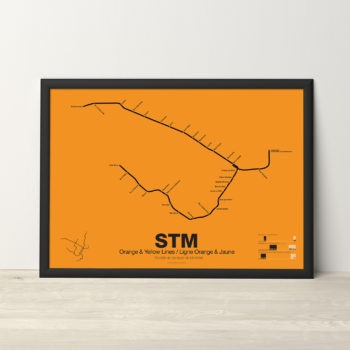 $30.00 – $80.00
$30.00 – $80.00
Printed on Satin finish 80# cover stock – 220 GSM. Made in the USA! Standard production time is 5 Days. Please add more time for shipping.
Select options This product has multiple variants. The options may be chosen on the product page

